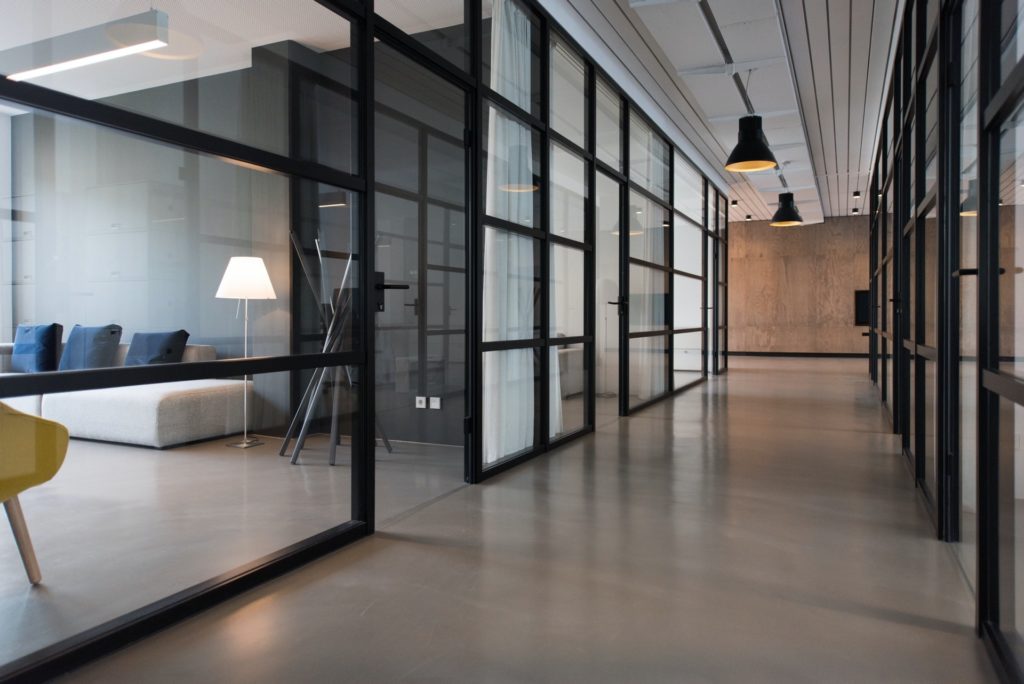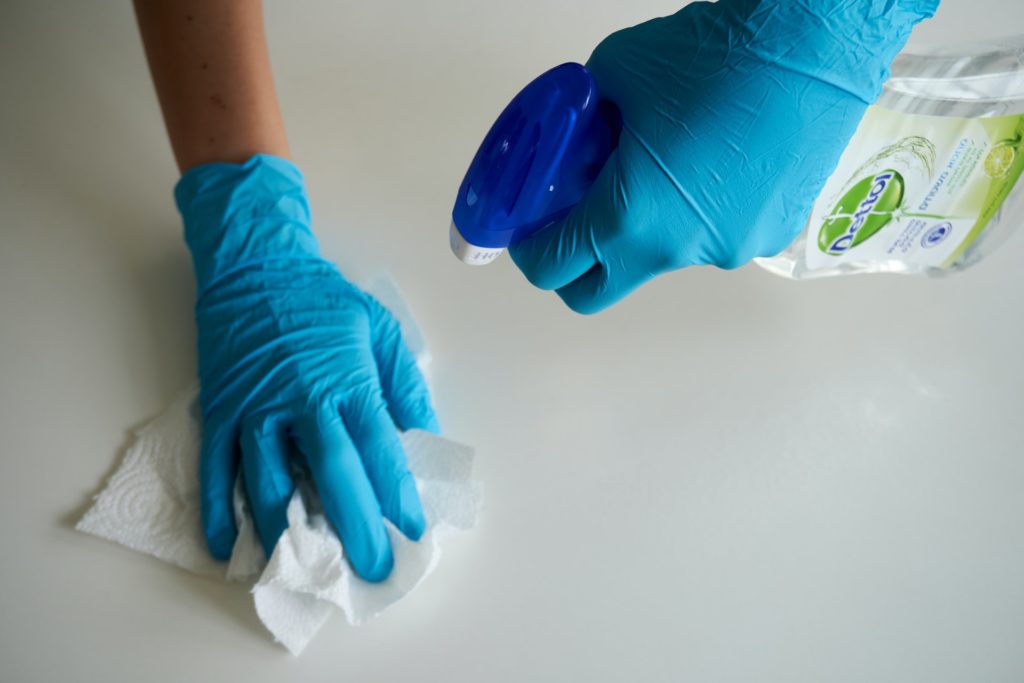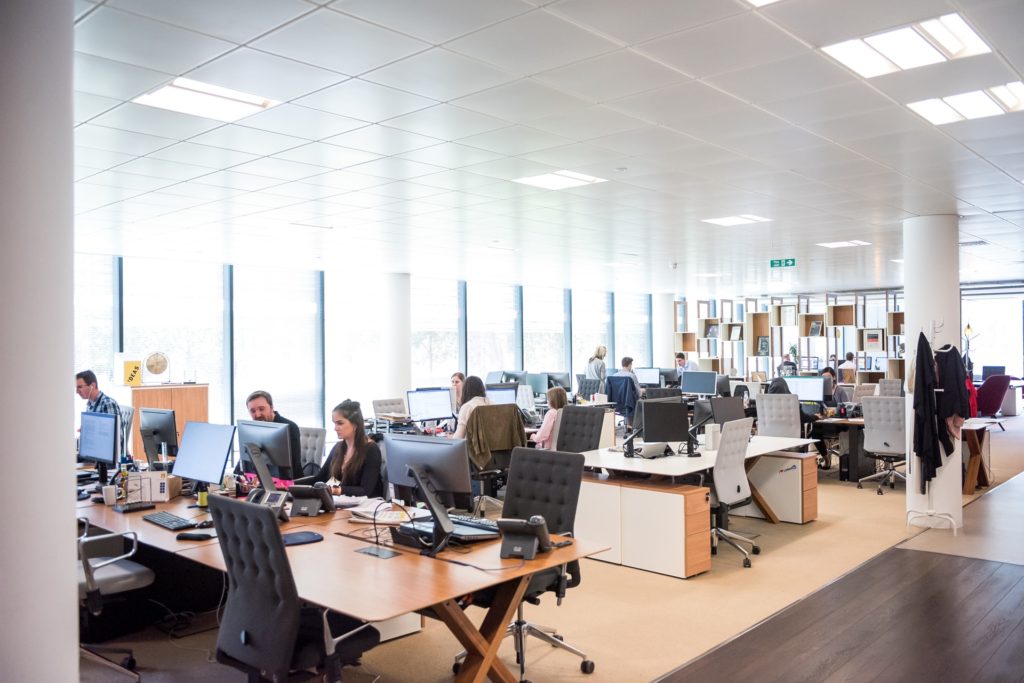
We all want to breathe in clean, fresh air, especially in the workplace, which makes it extremely important to make sure the air quality in your building is up to par. This will not only play a key role in your employee’s health but their productivity in the office as well. If you want your staff to feel their best and work hard while on the clock, it will be essential to understand the impact that poor air quality can have on those who work for your company.
Although you cannot see them, your office could be filled with many different allergens or pollutants that can easily become trapped in unfiltered air, especially in an enclosed space such as an office building. To avoid this, it is important to prioritize your office’s indoor air quality, promoting the health and well-being of your employees.
Whether you have a small business or a large corporation, you should value your office’s air quality, considering the impact it can have on your employee’s health and your company. By understanding what air quality is, how to detect poor air quality levels, and learning about new ways to improve the air quality in your space – you can create a safe, healthy environment that will enhance your employee’s productivity and efficiency in the office.
What is Indoor Air Quality?
Indoor air quality or IAQ refers to the air quality inside and around a building, relating to the health and well-being of building occupants. Poor indoor air quality is known to negatively affect the health and comfort of those who are breathing the air in.
Indoor air quality is a part of indoor environmental quality or IEQ too, which is essential to the physical and psychological aspects of life indoors.
To determine the indoor air quality, multiple air samples will need to be collected, human exposure to different pollutants will need to be monitored, and samples will need to be gathered from building surfaces. With these different collections and tests, professionals can determine if the air quality in an office building is good or not.
Indoor air pollution can be hazardous, especially if you are exposed for a long period, making it increasingly important to pay attention to the air quality in your building to make sure you and your employees are breathing in the freshest, cleanest air possible.
What Causes Poor Indoor Air Quality?
Indoor air quality pollution sources, in their many forms, will release gases or particles into the atmosphere, which is one of the primary causes of poor indoor air quality in office buildings. Another contributing factor is inadequate ventilation, which can increase indoor pollutant levels by not bringing in enough outdoor air to dilute the emissions from indoor sources or carry them out of the area. Plus, if there are higher temperatures or higher humidity levels in an indoor space, this can help to increase the concentration of some pollutants, making them worse than they already are on their own.
While there are many different pollutants that you may come into contact with, the impact of any single source will depend on how much of a given pollutant it emits and how hazardous the emissions are.
Sometimes factors such as how old the source is or if it has been properly maintained will be important.
When it comes to building materials, furnishings, or products like air fresheners, pollutants will be released more or less continuously, while smoking residue or pollutants from cleaning products can be released intermittently. Also, with unvented or malfunctioning appliances being improperly used, there can be high or potentially dangerous levels of pollutants emitted as a result.
This is important to keep in mind, to make sure you can recognize where pollutants come from and how they are emitted into the air in your office building. With this knowledge, it will be easier to detect an air quality problem and what exactly the pollutant source is.
Most Common Causes of Poor Indoor Air Quality:
- Pollutants that come from cleaning supplies
- Carpet fumes from a newly installed carpet
- Paint and VOC’s from a freshly painted office space
- Mold or mildew caused by excessive moisture or humidity levels
- Poor ventilation systems
- Appliance-generated pollutants from a space heater or other combustion appliances
- Artificial fragrances from air fresheners or deodorizers
- Tobacco residue

How to Detect Indoor Air Quality Issues in Your Office?
If you want to check on the air quality in your office space, to ensure the health and well-being of your employees, there are a couple of different ways that you can go about detecting indoor air quality issues.
Do Air Quality Tests on Your Own
If you want to utilize a more cost-effective way to check on the air quality in your building, it is always a great option to conduct tests on your own with products that you can easily find in certain stores or online.
Invest in an Air Quality Monitor
To effectively detect and log the quality of air in your office space, it is recommended to invest in a reputable air quality monitor to keep in your building. These devices will usually check for allergens that you inhale, chemical pollutants, temperature, and humidity levels.
Check for Signs of Mold
In most cases, you should be able to detect mold by simply using your sense of smell. If you have been questioning a musty odor and cleaning does not remove the smell, this is might be a concern. You may consider hiring a professional to conduct a mold test to make sure everything is okay.
Utilize an Air Purifier
If you want to actively work on improving the air quality in your office, it may be time to invest in an air purifier. This will help to remove dust particles, mold spores, and other allergens efficiently.
Install a Carbon Monoxide Detector
Due to the colorless and odorless nature of carbon monoxide, it is helpful to install a carbon monoxide detector on each floor of your office building. Just remember to change the batteries every six months, to ensure the detector will work properly year-round.
Change Air Filters Regularly
It is always a good idea to change your air filters regularly, to promote a healthy flow of air throughout your office space. This will help to collect allergens and other particles, allowing you to breathe easier especially if you are easily affected by allergies.
Look for Signs of Poor Air Quality in Your Workplace
While it may seem self-explanatory, it is always important to actively look for signs of poor air quality in the workplace. This can help you detect indoor air quality issues before they get out of hand so that you can take care of the problem before it begins affecting your employee’s health.
Increase in Allergy Symptoms
Oftentimes we attribute our allergies to changing seasons or bad weather, but irritants and pollutants in the air can also cause allergy-like symptoms in your employees too. Look for symptoms such as coughing, sneezing, nasal congestion, headaches, or bloody noses in your employees, and get your air tested if you have noticed a rise in any of these symptoms.
Monitor Construction Around your Office Building
If there is construction going on in the area surrounding your office building, your employees could be exposed to dust particles, chemicals, or other pollutants that can collect in your HVAC system.
Seek Out Professional Help to Improve Office Air Quality
If you are concerned about the quality of air in your office space, it may be the right time to seek out professional help. Even if you think you have exhausted all solutions, it can be extremely helpful to enlist the help of a professional, to ensure the health, safety, and comfort of your employees.
Get an Air Quality Test Done
To protect your employees and anyone who spends time in your building, it may be in your best interest to get an air quality test done by a professional. This will help you better understand what the air quality levels are and what the pollutant source is, to help you begin taking the proper steps to improve the indoor air quality in your office.
Tips to Improve Indoor Air Quality in Your Workplace

In an office building, there are so many people in such a small, confined space that it is easier for dust, dirt, and allergens to build up. If the indoor air quality is poor in your building, it can negatively impact your employees and their well-being. If you have heard them complaining about any symptoms on the job, it could be related to the air quality levels in the office.
To avoid this outcome and improve the indoor air quality in your office space, it is important to keep these things in mind to enhance the productivity, efficiency, and comfort of your employees.
Keep Air Vents Open and Unblocked
To make sure air is moving and flowing properly throughout your office space, every air vent in your building must be open and unblocked. If by chance a box or piece of furniture is blocking the vent, this could put your employees at risk due to less airflow.
Replace Air Filters Often
With dust and debris that can build up in air filters, it is easy for them to become clogged, making it impossible for air to filter through. Don’t forget that air filters should be replaced every 6 to 12 months, to ensure healthy airflow and air quality levels are maintained.
Pay Attention to Humidity Levels
For most buildings, a good humidity level is between 30 and 50 percent. By maintaining this certain level of humidity, you will be able to keep dust mites, mold, and mildew at bay. You could also invest in dehumidifiers or portable air conditioners to help control the humidity in your space too.
Inspect Air Ducts
If you think that your air ducts are contributing to the air quality in your building, it may be beneficial to call in the help of experts who can clean the ducts and make sure they are working properly.
Bring in Office Plants to Improve Air Quality
While new office plants can add a pop of color and an appealing aesthetic to your office, they can also be helpful by eliminating harmful toxins in the air and replacing them with new oxygen. This will enable your employees to breathe easier and feel better while on the clock.
Enjoy the Benefits of Fresh Air
If your office has windows, make sure to open them up and get fresh air into your building with ease. If the weather permits, having your windows open can help to improve airflow and circulate out any impurities.
Maintain a Clean Office Space
To promote a healthy work environment with good indoor air quality levels, it will be essential to maintain a clean office space. To make sure this does not get overlooked, it may be helpful to enlist the help of a cleaning professional to help vacuum, sanitize, dust, clear away clutter, and remove any trash. By scheduling routine cleaning, it will be easier to maintain your space and be sure that it is being kept up with.
Test the Air Quality
In most cases, it is logical to hire a professional with all the right tools to test the air quality in your office. With their knowledge and expertise, they will be able to inspect the area and see what the source of pollution is. They may even have some helpful tips and tricks for you to follow, making it easier to improve the air quality in your building.
Keep These Things in Mind When Managing an Office
- It can be helpful to maintain a good relationship with the building manager, to stay updated on any indoor environmental issues that may arise over time.
- When decorating your office space and placing different pieces of furniture, make sure you prioritize air circulation while keeping temperature control and your HVAC systems in mind so that they are not compromised.
- Develop an effective smoking policy for the members of your team, to avoid involuntary exposure to secondhand smoke or tobacco residue.
- Avoid products that can cause indoor air quality issues such as certain air fresheners, deodorizers, and cleaning products that you may use daily.
- Make sure to integrate any indoor air quality concerns into your budget and financial decisions, to make sure you are financially ready to improve the air quality in your building with these expenses already taken into consideration.
- If you are planning on remodeling or renovating in any way, it is important to make sure that your employee’s exposure to any allergens or pollutants will be at a minimum.
- Be sure that only necessary and proper pest control methods are being taken, to ensure these chemicals are not able to enter your office space.
Improving the Air Quality in Your Office

If you value the health, safety, comfort, and well-being of your employees, it is important to make sure the indoor air quality in your office is being maintained properly. This will not only help you keep your employees happy in a healthy environment, but it will allow them to be even more productive and efficient while at work.
To avoid the problems that occur with poor indoor air quality, it is critical to understand what air quality is, how it impacts our health, how to detect if there are any issues in your building, and what you can do to improve the air quality in your workspace.
With many varieties of pollutants out there, there has never been a better time to educate yourself and be more aware of what could be lingering around your employees every single day. By implementing new ways to detect any issues and being prepared to make sure air quality levels are at their best, you can ensure your employees will be able to do their best work.
By taking the proper steps to prevent poor air quality levels while improving the quality of air in your building, you will be able to put your employees first and create a safe, fruitful environment for your entire company.